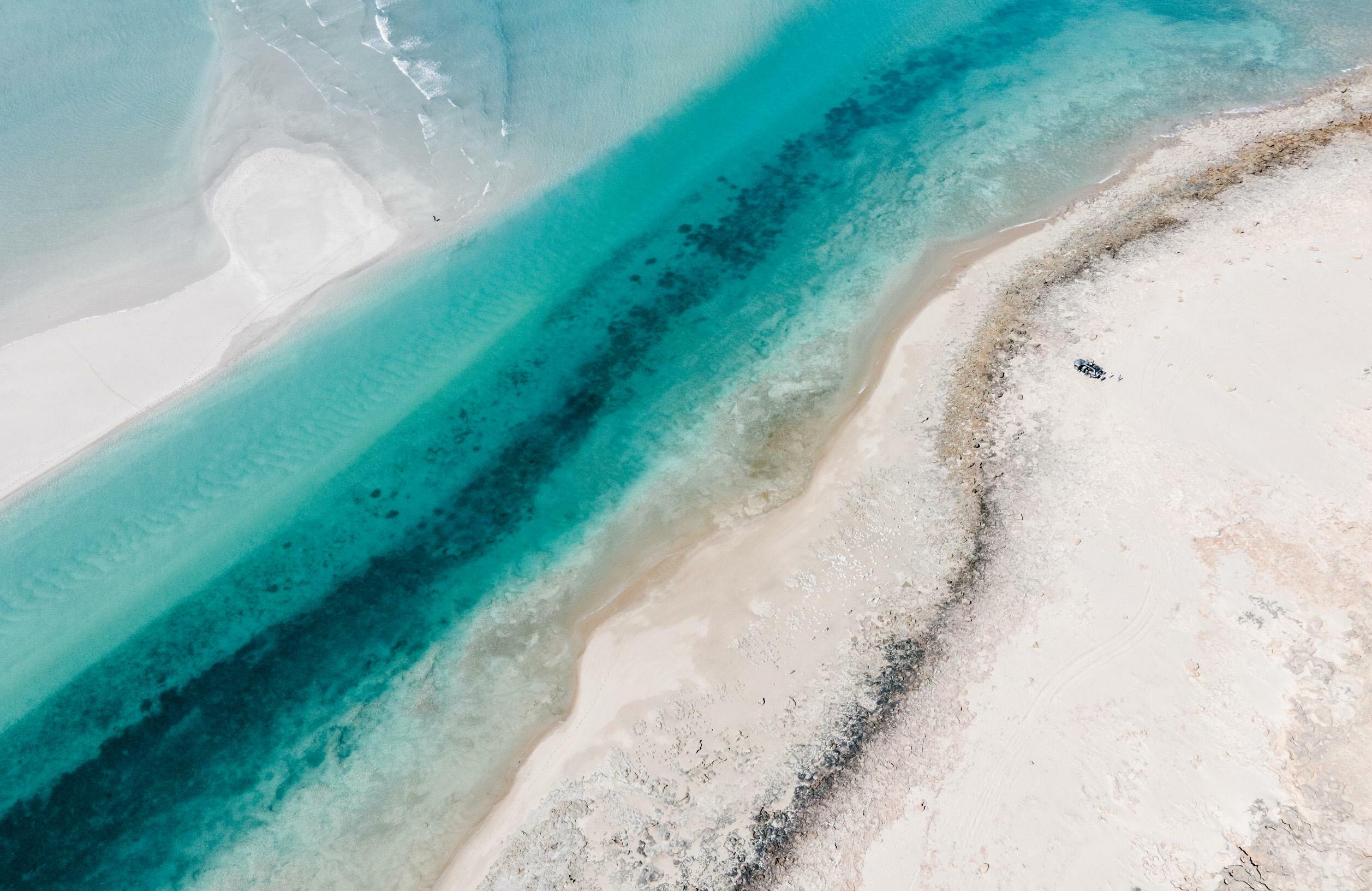carried away

The sun was burning high and bright on a pellucid morning off Australia's Kimberley Coast when I stepped onto Ngula, more commonly known as Jar Island. The dull yellow of sand and sandstone contrasted with the vivid blue of the Timor Sea all around me. At my back was a rocky outcropping where millennia ago the island's traditional land owners, the Wunambal Gaambera people, lay their dead. Before me, a cluster of billion-year-old boulders contained clues about how they lived.
As I passed through these monoliths, I saw that they bore traces of serpents and individuals in headdresses. At more than 30,000 years old, these paintings are considered the oldest figurative rock art in the world, though their age and significance are still debated. "The thing about the Kimberley," said Greg Fitzgerald, a guide on Seabourn Pursuit, the expedition ship on which I'd come to the region, "is that it will leave you with more questions than answers."
The Kimberley is one of the world's last great wildernesses. Humans have inhabited this territory for 70,000 years, yet it remains stubbornly untamed. Its vast, arid interior, which is three times the size of England, has never been successfully charted. Its 1.8-billion-year-old cliff faces, gargantuan waterfalls, and dry, cracked expanses-where you may come across a dinosaur footprint-feel suspended in eternal stillness, undisturbed by human history. The place's meditative calm is an antidote to the frenetic distractions of modernity and a major motivation for traveling to one of the most remote and isolated parts of the planet.
This story is from the {{IssueName}} edition of {{MagazineName}}.
Start your 7-day Magzter GOLD free trial to access thousands of curated premium stories, and 9,500+ magazines and newspapers.
Already a subscriber ? Sign In
This story is from the {{IssueName}} edition of {{MagazineName}}.
Start your 7-day Magzter GOLD free trial to access thousands of curated premium stories, and 9,500+ magazines and newspapers.
Already a subscriber? Sign In

ALL ABOUT ACCRA
Artist Kwaku Yaro shares where to go for art, food, and seaside solace in Ghana's colorful capital

IN GOOD TASTE
An influx of fresh design energy has arrived in the modernist enclave of Litchfield, Connecticut

rising up
After years of pandemic-induced closure, Hong Kong is writing its next chapter. Francis Lam meets the artists and chefs (and one artist-chef) driving their dynamic city's latest round of reinvention

human touch
Across Northern Italy, skilled artisans are working to preserve the country's oldest traditions, from winemaking and set design to truffle hunting and textiles

pioneer spirit
On a road trip through southern Idaho, Betsy Andrews explores the state's long human history of sanctuary seekers, renegades, and travelers looking for a fresh start

BETTER ON THE BEACH
The quiet coastal village of Pererenan offers community vibes and a hint of the old Bali

HERE COMES THE SUN
Aussie designers Nicky and Simone Zimmermann share their favorite spots in Sydney

why we travel
EXPERIENCES THAT CHANGE THE WAY WE SEE THE WORLD

Safari at Sea
On the first sailing of ecotourism brand andBeyond's new cruise in the Galápagos, Chris Schalkx learns a lesson in conservancy

A Quiet Place
While trekking through a remote sweep of the Serengeti, Rebecca Misner learns how to live in the moment
